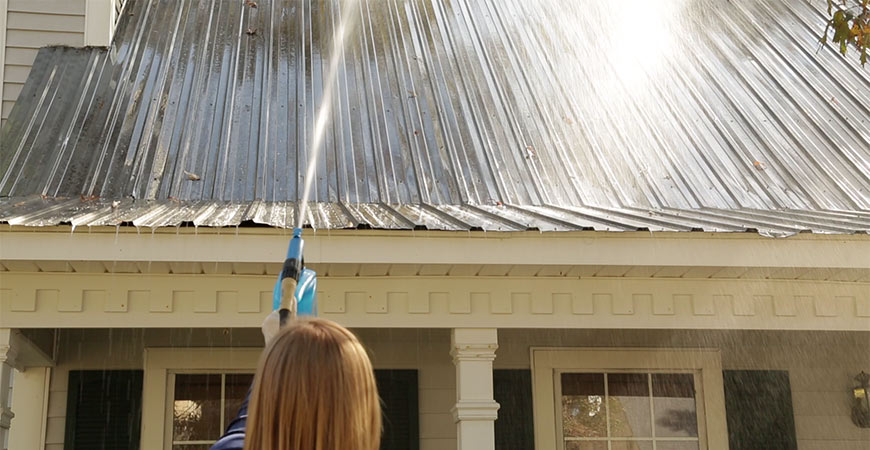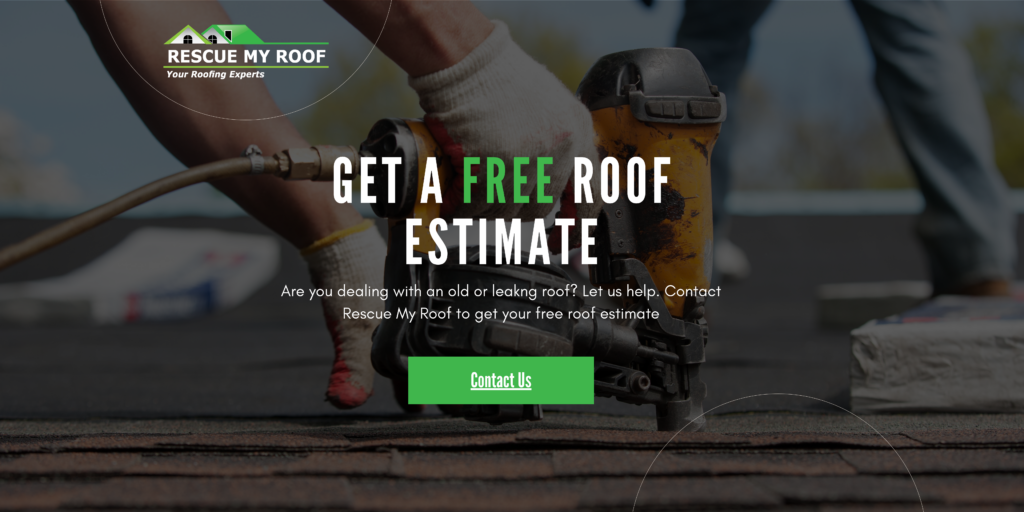What Is Metal Roof Chalking? (Causes, Prevention, & More)
Metal roofs are renowned for their durability and longevity, but like any roofing material, they are not immune to issues over time. One common phenomenon that metal roof owners may encounter is chalking.
Chalking can send most homeowners into a panic. If you’ve seen chalking on your own roof, you may be wondering, how do I get rid of this?
While Rescue My Roof does not offer metal roof installation, we have walked homeowners through maintenance on all roof types. We can offer you some expert advice on what to do when you notice roof chalking.
In this article, we’ll delve into what chalking on a metal roof is, its causes, potential risks, and effective solutions to address this issue.
What is Chalking On A Metal Roof?

Chalking refers to the gradual breakdown of the protective coating on the surface of a metal roof, resulting in a powdery residue that resembles chalk. This residue is typically a mixture of oxidized metal particles and degraded coating materials.
Because your roof is constantly exposed to the elements, you will experience some degree of chalking and fading over time. No matter what type of pigment or resin that a manufacturer uses on a coil, nothing will preserve the color forever in an outdoor environment.
Although, there are ways to prolong the life of the color on your roof, and it starts with being educated and informed about the factors that affect fading, the types of resins/how well they stand up to the elements, and how fading is actually measured.
Causes of Chalking
- UV or Sun Exposure – Probably the biggest determining factor in how a metal roof or wall panel system will fade is based on the amount and strength of the UV exposure the panel gets. For example, a metal roof in Texas is more susceptible to fading due to sun exposure than a metal roof in Wisconsin. This is the reason that most paint systems are often tested in locations with extreme weather, like Florida, to see how it measures up to the conditions over a long period of time.
- Temperature – While any temperature will cause fading to happen over time, extreme heat and cold speed up color changes. Research and field testing also shows that frequent temperature fluctuations weaken the pigment by manipulating the color’s chemical makeup.
- Moisture – Any kind of moisture, whether it be rain, snow, seawater, condensation, etc., can alter the makeup of any substance over time. Resins are designed to stand up to water and protect the pigment, but constant exposure to water, especially standing water, speeds up the process. Acid rain or water exposed to harsh pollutants in the air that come into contact with the panels can affect fading too. Be aware that many warranties don’t cover metal roofing on a structure that is within a certain distance of a coastline, bay, or marsh. If you’re unsure if moisture will affect your metal roof or wall system, ask the manufacturer before you buy.
- Age – As metal roofs age, the protective coating naturally degrades and becomes more susceptible to chalking.
- Low-Quality Coatings – Inferior quality coatings or improper application techniques can contribute to premature chalking on metal roofs.
- Environmental Factors – Environmental pollutants, such as air pollution and airborne particles, can accelerate chalking by degrading the protective coating on the metal roof.
Risks Associated with Chalking
While chalking itself may not pose an immediate threat to the structural integrity of the metal roof, it can have several negative implications:
- Aesthetic Degradation – Chalking can detract from the appearance of the metal roof, giving it a dull, chalky appearance that diminishes curb appeal.
- Reduced Weather Resistance – Excessive chalking can compromise the protective barrier of the metal roof, making it more susceptible to corrosion, rust, and other forms of damage.
- Potential Health Concerns – In some cases, chalking residue may be washed away by rainwater and runoff, potentially contaminating surrounding areas and posing environmental and health risks.
Solutions for Addressing Chalking

To avoid chalking, homeowners can clean their roofs regularly. Periodic cleaning of the metal roof can help remove chalking residue and prevent its accumulation. Use a gentle detergent and a soft-bristled brush to avoid damaging the protective coating.
Additionally, applying a fresh coat of high-quality protective coating can restore the appearance and weather resistance of a chalky metal roof. Be sure to choose a coating specifically designed for metal roofs and follow the manufacturer’s instructions for application.
If you cannot upkeep the roof yourself, consider hiring a professional roofing contractor to inspect the metal roof and assess the extent of chalking and any underlying issues. They can recommend appropriate maintenance and repair measures to address the problem effectively.
And, lastly, you can invest in preventive maintenance, such as applying protective coatings and conducting regular inspections, prolonging the lifespan of your metal roof and mitigating chalking and other issues.
Preventing Metal Roof Chalking & Fading
Chalking on a metal roof is a common occurrence that can detract from its appearance and compromise its weather resistance over time. But by understanding the causes, risks, and solutions associated with chalking, homeowners can take proactive steps to address this issue and ensure the long-term durability of their metal roof.
Make sure to add regular maintenance, periodic cleaning, and professional inspections to your to-do-lists to maximize the lifespan of your metal roof.
Learn more about metal roofing with “Metal Roofs: How Long Do They Truly Last” and “How Much Is A Metal Roof (2024 Ultimate Guide).”
While Rescue My Roof does not offer metal roof installation, we can help you with all your asphalt roofing, siding, and gutter needs. Contact us today to get a free estimate.


